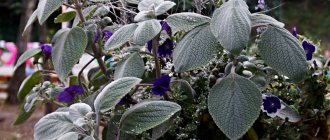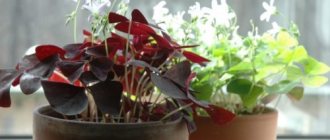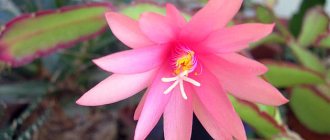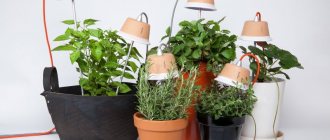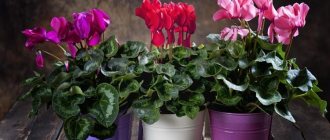Syngonium, which belongs to the lianas, is distinguished by its species diversity, different leaf shapes and colors. It is the variety of its forms that allows you to introduce novelty into the interior of the room. Syngonium can be grown as an ampelous plant in a hanging pot or you can install a support for it, along which the shoots will twine and grow in height. Caring for syngonium at home is quite simple.
general information
Syngonium is a compact African liana, the shoots of which are densely covered with beautiful variegated leaves. Moreover, depending on the type, they can be solid, dissected or lobed. The branches are covered with aerial roots, so that the syngonium clings to any suitable support.
Interestingly, with age, the shape and shade of syngonium leaves can change. There are plain, spotted, striped and variegated species, as well as species with silver streaks. The color range varies from milky to dark green. Leaf sizes reach 35 cm.
There is a belief that if someone is sick in the house, syngonium contributes to his speedy recovery. According to another legend, it helps fight insomnia.
Photo: stocvetov.ru
Description
Syngonium belongs to the Araceae family. This evergreen vine grows in the tropical forests of Central and South America. Its flexible stem wraps around tropical trees and stretches upward. Under natural conditions, syngonium reaches ten to twenty meters. At home, it grows up to one and a half to two meters. Over the course of a year, the height of the shoots increases by thirty centimeters, forming six to seven new leaves. On the shoots, leaves on long petioles are located in convex nodes. At the nodes you can see aerial roots, with the help of which the vine clings to the support.
The leaves are bright green in color and have a heart-shaped or palmately divided blade. Relief veins are visible in the center and along the edge. The leaves can be plain or with light streaks, with a smooth or velvety surface.
This is how syngonium blooms
Many will be surprised to learn that syngonium blooms in nature. At the end of spring, cream-colored cobs appear, which are covered with a red or pink blanket. Syngonium flowers are cross-pollinated. The fruits are small berries. They attract animals and birds, which eat the berries and disperse the seeds over long distances.
Important! The milky juice released when twigs and leaves are broken is poisonous and irritates the skin. When working with the vine, you must wear gloves and keep animals and children away from it.
Types of syngonium
Most often, syngoniums differ only in the shape and color of the leaves. Let's look at a few particularly spectacular and popular varieties!
Auricular syngonium
Its leaves do indeed slightly resemble drooping ears, but at the same time they are very elastic. And also large, wide, and a beautiful glossy green shade.
Photo: domashniecvety.ru
Pink syngonium
One of the most decorative species with a delicate pastel pink tint of leaves. Moreover, they are not monochromatic, but covered with brighter pink or, conversely, greenish spots.
Photo: bercocock.id
Syngonium Brocant
Its peculiarity is also in an unusual shade, only this time not pink, but chocolate brown. Against the background of elongated leaf plates, reddish veins stand out even more clearly.
Photo: m.nn.ru
Wendland Syngonium
This species is suitable for gardeners who prefer slow-growing plants. The leaves here are smaller, up to 18 cm, and resemble an arrow in shape. They also have an unusual velvety texture.
Photo: irkagro.ru
Syngonium Pixie
Compact syngonium with heart-shaped leaves is ideal for indoor cultivation. It has a delicate light green color with a silver tint and a darker edge.
Photo: instagram.com
Legleaf Syngonium
A tall, heat-loving species that has become the basis for many breeding hybrids. It grows quickly, and in a year it stretches up to 60 cm. The leaf plates really follow the shape of the foot.
Photo: youla.ru
Syngonium Butterfly
The most unpretentious syngonium even by the standards of this completely undemanding plant. The color can be almost any, depending on the variety.
Photo: vosadu-li-vogorode.ru
Indoor flowers: photos and names (catalog)
Benefits of the plant
In addition to its decorative properties, syngonium is also credited with a number of useful qualities. This plant regulates the level of humidity in the apartment, forming drops of water on the greenery, and saturates the air with oxygen.
It is believed that the enzymes that the flower secretes help calm the nerves and relieve stress. One thing is certain - you need to be very careful with the juice of this plant. Due to its toxicity, it can cause an allergic reaction. But if precautions are taken, this vine is not dangerous.
Syngonium care
Syngonium is a heat-loving and moisture-loving plant, but otherwise it does not have any specific requirements. Even a beginner can easily handle it!
Temperature
Syngonium feels most comfortable at a temperature of about +20 degrees. Small deviations will not affect the well-being of the plant. In winter, we recommend lowering the temperature to +18.
Photo: iprofiles.ru
Lighting
Despite its heat-loving nature, syngonium does not like direct sunlight. We recommend choosing slightly shady places or northern windows. Varieties with bright green leaves may even fade when exposed to too much light.
Photo: nanotank.ru
Watering
Regardless of the season, syngonium needs abundant regular watering. Make sure that the soil is constantly moist, but at the same time that the top layer has time to dry out.
Photo: fastbox.su
Humidity and spraying
Syngonium loves high humidity. In the warm season, regularly wipe and spray the leaves. In winter, move the flowerpot away from radiators and place it in a tray with wet expanded clay.
Photo: land-flowers.ru
The soil
Any neutral or slightly acidic soil is suitable for syngonium. But it must be very loose, because the plant loves moisture, and it cannot stagnate.
Photo: domashniecvety.ru
Fertilizers and fertilizing
Syngonium does not require mandatory feeding, but you can sometimes use liquid mixtures for deciduous plants from late spring to late summer. The optimal frequency is once every 3 weeks. Choose a composition with a minimum amount of calcium.
Photo: fastbox.su
Support
In order for the syngonium to grow better and look neater, it needs support. It is installed immediately when planting the plant, so as not to damage the root system later. Place the tube in the middle of the pot, dig it in, and then carefully spread the roots of the flower on top.
Photo: zen.yandex.ru
Transfer
Young plants need to be replanted every year, and adults - every few years. This will help refresh the soil and at the same time change the flowerpot to a larger diameter. We recommend carrying out the procedure in the spring. Several syngoniums can be planted in a large flowerpot at once.
Photo: o-remonte.com
Hamedorea (50 photos): types, cultivation and care at home
Reviews from flower growers
Many people grow this plant, love it, but do not know that its scientific name is Syngonium. The plant is native to the tropics. Syngonium is a hanging plant that grows like a liana. It reproduces easily - the plant forms aerial roots, which, once in moist soil, germinate and the branch takes root. Syngonium loves moisture and frequent spraying of leaves. Cannot tolerate excessive heat or cold. Attention: the flower is poisonous and it is advisable to place it away from children and animals.
olga-koshka2
https://irecommend.ru/content/etot-tsvetok-ozhivit-lyuboi-interer-pridast-estetiki-prekrasen-pravda-yadovit-foto-2-ukh-sin
Syngoniums are a very unpretentious and elegant decorative foliage plant. During the period of my great passion for plants, I learned that they are not only green and white-green, but also reddish and pink, and I decided that I urgently needed these varieties. I like syngoniums because they can be used to form a beautiful vine on a stick or on a wall or stand. Or a beautiful bush if you trim it in time. In addition, there are varieties that tend to be more bushy than liana-like, which is good news, since I like bushes more. What is required to care for syngonium? Almost nothing. So: 1. You need to plant in universal soil, be sure to put expanded clay or some other drainage on the bottom. Humus can be added to the soil.2. The size of the pot should not be too large, so it is very convenient to hang the flower in a flowerpot. Somewhere around 1.5 l.3. Water regularly as it dries. The plant cannot be dried, as it loses its decorative effect and the tips of the leaves begin to dry out or even die off.4. You can fertilize, if desired, with fertilizer for decorative foliage plants or natural fertilizers, if that’s what you do. On average, I water all decorative foliage plants with mineral water once every two weeks.5. Lighting. Not a south window, the bright sun can burn the leaves. But even in the dark, the plant will not be as strong, colored varieties may lose some of their color, and the leaves will become smaller. The result is moderate lighting on the western and eastern windows, possibly on the northern ones.6. It is advisable to frequently spray and wash the leaves in the shower.7. Rooting. Segments with aerial roots or root division. Propagates very easily.8. It does not tolerate heat - it can wither and turn yellow, the same goes for cold weather. ATTENTION! Syngonium is poisonous. The juice of the plant should not get on the mucous membranes or into the oral cavity. Therefore, it is advisable to keep the plant away from cats and children.
LvIcO4ka
https://irecommend.ru/content/lyubimoe-rastenie-kustovye-i-ampelnye-sorta-mnogo-foto
My syngonium appeared at home as a small piece of stem with a leaf. I placed it in water, then planted it in sand, it took root, in principle, this plant has a survival rate of 80–90%, out of 20 cuttings, 17 subsequently took root. Among syngoniums there are creeping and climbing species. It is this plant that I curl onto a support and it feels great.
polina-polina
https://otzovik.com/review_169424.html
I took the sprout of this plant from my mother; it was one leaf, almost without roots. Having planted the baby in the ground at home, I didn’t expect much, since flowers rarely took root after moving, but this one agreed to live with me and grew stronger before my eyes every month. Syngonium likes diffused light, abundant watering, and it likes moisture, but without excess. I assigned it a place in the bathroom, it’s always humid there, and I don’t forget to water it. They write that the older the Syngonium, the larger the stems and leaves should be, but my flower somehow decided to grow as a bush for now, maybe, of course, at an older age he will want more, but for now, so will I, and, apparently, everything suits him! There are several varieties of this flower, but mine, apparently, is the “White Butterfly” variety, as I learned from the Internet in comparison. So I recommend this bush to flower lovers, especially since it not only decorates the room, but also, as experts write, purifies the air in it!
Astro4Ka
https://otzovik.com/review_1778853.html
I wanted this flower for a long time, and finally one day I bought it. I bought it very small - only two leaves. The leaves reminded me of the shape of hearts. I would never have thought that this plant, one might say, requires no care at all, well, apart from, of course, watering. Syngonium loves where there is light, but not much, and non-sunlight, so I put it in the bedroom. If there is a lot of light, the leaves will be dull and pale. I sprayed it with water every day. After about two weeks, the number of leaves began to increase, when there were already 20 leaves, I decided to replant the plant. The roots of the syngonium were very long, I cut them off, left the youngest ones and planted them in a larger pot than it was. Two months passed and the plant began to curl. Now I already have three large pots with this beautiful flower, because they reproduce very easily. The other day I bought another plant like this, only in a different color.
whiting
https://otzovik.com/review_550663.html
Planting and propagation of syngonium
Syngonium is propagated by cuttings, each of which should have a bud. They are rooted immediately in loose soil in a warm place - at about +25 degrees. When the cuttings begin to grow, they can be planted in separate pots. At this time, you need abundant watering and regular spraying, and in the summer you also need shading from the sun. In order for the young syngonium to branch better, it is pinched above the sixth leaf.
Photo: mebeldom72.ru
Useful tips for growing
In order for this plant to please you with its growth, you can use additional recommendations:
- You can choose any container for the syngonium. Both a flower pot and a regular pot suspended from a support will be used. Care in both cases remains standard.
- For better rooting, syngonium cuttings can be treated with a growth stimulator, then the roots will be stronger and the plant will grow them faster.
- It is better to plant syngonium in a mixture of leaf soil, peat, sand and humus. All this is mixed in equal parts.
- If you cut off the top of the main stem and side shoots, the vine will turn out to be a rather fluffy bush.
- During the period of active growth, namely from the beginning of spring to the end of autumn, the plant needs abundant watering. With the arrival of winter, the amount of water is reduced. You can also replace spraying with watering from the shower.
- Based on the condition of the leaves, you can understand what the plant is lacking. Thus, excessive watering will be reflected in darkening and dullness of the foliage, and a lack of light and nutrients will result in a decrease in leaf size.
Pest and disease control
Syngonium is almost never attacked by pests, but scale insects and aphids are sometimes encountered. Aphids hide on the undersides of leaves and cause them to turn yellow and curl. Scale insects spread throughout the plant and drink juices from it. In both cases, you cannot do without special medications.
With improper care and improper watering, the plant suffers from fungus. There are several diseases that it provokes, but you don’t have to distinguish between their subtleties. Modern fungicides have a complex effect. You just need to remove the affected leaves and shoots and treat the plant.
Photo: rastenievod.com
Date palm (50 photos): types, care and cultivation at home
Syngonium – photo
Syngonium is a simple, unpretentious, but at the same time very beautiful vine. It’s impossible not to pay attention to its decorative leaves!
Photo: greensotka.ru
Photo: domashniecvety.ru
Photo: srp.thehouseofchronic.com
Photo: vosadu-li-vogorode.ru
Photo: domashniecvety.ru
Photo: pinterest.ru
Photo: pinterest.com
Photo: forum.bestflowers.ru
Photo: forum.bestflowers.ru
Photo: orchidea-shop.ru
Photo: domashniecvety.ru
Photo: nabaty.wordpress.com
Photo: flowersbymail.ru
Photo: gvihardwares.com
Photo: domashniecvety.ru
Photo: ogorod-bez-hlopot.ru
Photo: fiftyflowers.ru
Photo: jubkiplus.ru
Photo: domashniecvety.ru
Photo: sadyeleny.rf
Photo: br39.ru
Photo: fastbox.su
Photo: sadovnikam.ru
Did you like the post? Subscribe to our channel in Yandex.Zen, it really helps us in our development!

